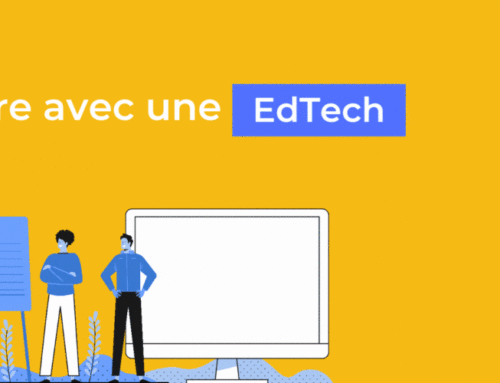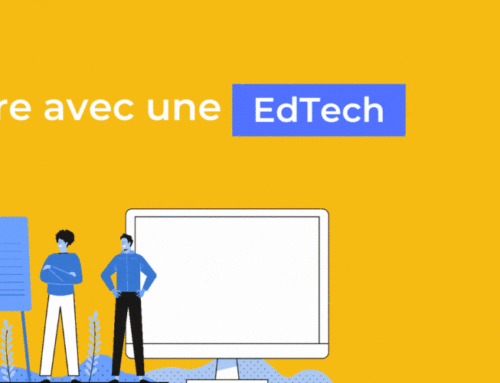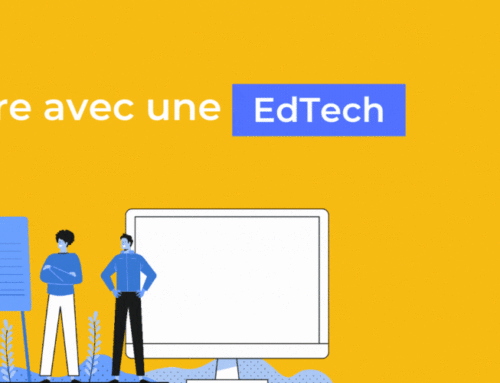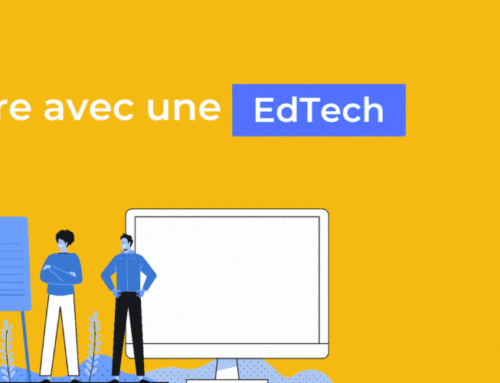
Frédéric Serres, Speedernet Sphere Software Business Development Manager
Frédéric Serres, SPHERE is a tool for designing immersive, scripted experiences, enabling educational teams to create their own experiences. Can you tell us how it works ?
Speedernet Sphere is an authoring tool created by Speedernet. The first version was released in 2017.
You install this software on your workstation. Its intuitive handling requires no programming skills. So it’s accessible to everyone.
The flow for creating interactive immersive content is simple: You integrate your 360° photo, 360° video or 3D model resources, which will be the scenes in which the learner will evolve. Don’t have these resources yet? You can use those provided in the library supplied with the tool.
Next, bring your content to life. To do this, enrich your scenes by adding elements such as images, texts, 2D videos, 3D objects, sounds and questionnaires. Thanks to a powerful scripting tool, you can add interactions that allow you to personalize the learner’s journey according to their actions.
Once the assembly phase is complete, make your content available by uploading it to your LMS1 (such as Moodle) or directly to a server. Users can then immerse themselves in the experience on a screen (computer, tablet, smartphone) or in a Virtual Reality headset via a simple URL (web address).
You are the full owner of the content you have created. We’ve opted for a full-web solution, so you can use them in any way you like, via a simple browser. Software is therefore only required during the content creation and updating phases.
Last but not least, when it comes to evaluating the learner’s learning path, you can use the SCORM standard to analyze the LMS repository.
What value do you create for your customers ?
Speedernet Sphere is a reliable and proven solution. Its use to produce scripted immersive experiences guarantees all our customers access to immersive learning and all its associated benefits. Our customers are able to be reactive and creative in their immersive approaches, while integrating a controlled and virtuous economic model.
Our ability to support them is widely recognized. Speedernet provides its customers with a wide range of resources, including white papers, webinars, practical guides and videos illustrating feedback. Downloadable, they are useful and inspiring for boosting their knowledge of immersive experiences and making them ever more effective and engaging.
Face-to-face and remote workshops are available for those wishing to delve deeper into certain phases of immersive content production. From writing an immersive scenario to creating photo, video or 3D resources, and including expert handling of Speedernet Sphere, the catalog on offer is tailored to the needs of our customers.
Whether it’s through direct use of the tool by students as part of their training curriculum, or through the use by teachers of content produced by their educational teams, the benefits are commensurate with the targeted objectives.
Speedernet Sphere is also used by companies, contributing to fruitful exchanges between the academic and business worlds. In the case of work-study programs, for example, students can use Speedernet Sphere both in their course of study and at their host company.
It should be noted that the architecture of Speedernet Sphere software guarantees the confidentiality and security of the sensitive data contained in the immersive experiences produced by our customers. Indeed, once completed, all creations can be hosted as they wish on their own secure servers.
As owners of their creations, our customers have unlimited access to them (consultation, sharing, distribution, etc.), with no hidden costs. As a result, educational teams are able to bring all the efficiency they need to successfully complete the immersive projects their organization requires.
Almost everyone is talking about Metavers these days. What does this mean to you ?
Our positioning around the Metaverse is based on a simple logic : Speedernet Sphere is a 3D engine for creating worlds and bringing them to life, enriching them. This makes perfect sense in light of one of the most widely-used definitions of Metaverse: an open, shared and persistent digital world.
In fact, since the beginning of our investigations, we’ve been talking about a “persistent world”. The aim is to put educational and pedagogical uses behind words that have taken on a very marketing meaning in recent months.
Our vision is centered on peer-to-peer learning through a device that facilitates social interactions and experiences. The functionalities offered, if they have the capacity not to imitate reality but to augment it, should enable a significant enrichment of pedagogical possibilities.
Furthermore, we see Metavers as a broad field of exploration in terms of narration and interaction, which are the very foundations of engagement. Of course, it’s out of the question to think that this virtual world will totally replace the real one. They will live together, complementing each other and interacting. Nor is there any question of imagining Metavers as the sole brick in the educational model. In our view, it will be a high-value modality that needs to be “domesticated”.
What’s important to note is the lack of hindsight on the subject. We’re still in the construction phase, with no usage metrics, no evaluation, no precise feedback on commitment, and no implementation model. With the identification of a few observations, such as technologies that are advancing very rapidly, major players who are appropriating the concept, and an interest on the part of organizations that we’ll situate somewhere between watchfulness and curiosity….
In conclusion, we are convinced that the possibilities offered by Metavers in training will have a real value that complements other pedagogical practices, provided they are allowed to emerge. The current period, somewhere between rejection of Metavers and blissful acceptance, seems to us to be only temporary. We’ll need one or two years to project ourselves into value-added productions, and even longer to gain broader support once the many obstacles have been overcome.






